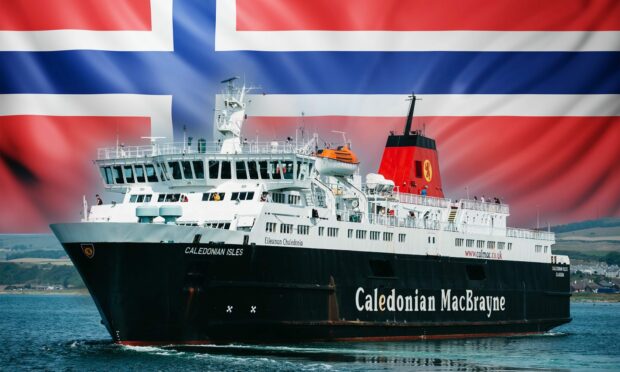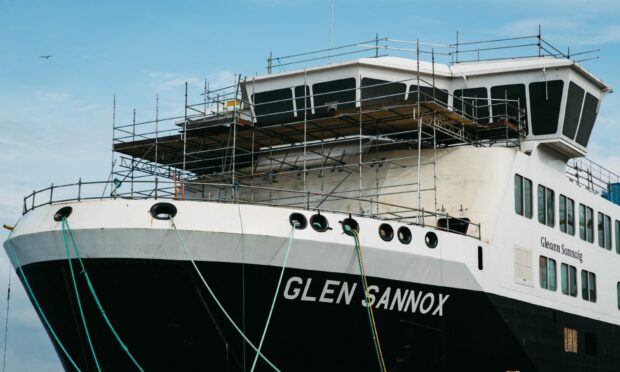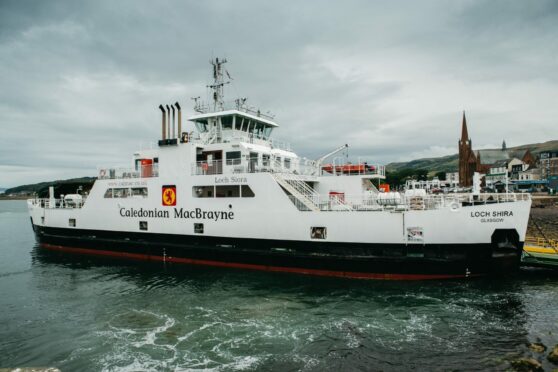Island communities know the reality of Scotland’s troubled ferry network, but could a solution be found in advice from overseas?
Here, the fleet is ageing, ferries are overdue and over budget, and passengers are not happy.
In an attempt to create a ferry network for the future, MSPs are turning to Norway.
On Tuesday, they heard from two experts helping to shape 16 ferry routes on the other side of the North Sea.
Dag Hole, director of ferry management at the Norwegian Public Roads Administration, was joined by Harald Høyem, transport analyst at Asplan Viak AS, in Holyrood.
1. First, get new ferries
A lot of the criticism levelled at the government is on two long-promised ferries that are woefully overdue and over-budget.
The MV Glen Sannox and the as of yet unnamed Hull 802 are still languishing in the Ferguson Marine shipyard in Port Glasgow.
On top of that the ferry fleet in Scotland is ageing. Around 38% of the vessels are over 30 years old.
MSPs were told Norwegian ferries tend to be around 10 years old, but others are “quite new” and they expect two hydrogen-powered vessels to set sail shortly.
Highlands and Islands MSP Edward Mountain asked how seriously he would be taken if he went to Norway to bid for a ferry contract with a fleet the age of Scotland’s.
Mr Hole was clear: “You would probably be outside the scope.”
2. We need to decarbonise the fleet
The Scottish Government says it wants to reach “net zero” emissions by 2045, and decarbonising the ferry fleet will go a long way to achieving this.
The Norwegian pair said they are “always” looking for zero or low emissions in their fleet, and said the discussion around electrifying the ferry fleet started as far back as 2010.
Mr Hole said: “In our experience, zero and low emissions ferries are cheaper than diesel ferries once they are in use.
“There is a higher cost in the beginning of the contract, especially because of work to the ferry quays.
“But once they are in operation electric ferries are cheaper, low maintenance, easy to use, and often have more power.”
3. Increase government subsidies
In recent years government subsidies in Norway have increased and the price of tickets for passengers has halved in the past year.
The subsidies have gone up because of an increase in demand, the need for more night-time sailings and to keep on top of modern technology.
Mr Hole said: “For the last few years fares in Norway have reduced substantially so I would say the cost of travelling by ferry in Norway is quite low compared to before.”
They added the fares and ticketing system is set nationally and is “fairly unified”, although they added there are discussions about potentially introducing a higher fare rate for tourists.
4. Have a back-up ferry nearby
A major problem faced by islanders in Scotland is when a ferry breaks down, there is no spare vessel that can be relied on at short notice.
However in Norway it is written into the ferry operators’ contracts there must be a spare ferry “nearby the route” – in some cases as close as only five hours away.
Mr Hole added: “In most cases traffic will be up and running again in quite a short time.”
The interventions seemed well timed on a day Deputy First Minister John Swinney set his budget for the year ahead.
Among the changes to the overall package on Tuesday afternoon was more cash for inter-islands ferries.
Mr Swinney said he will cover revenue cost increases incurred by local authorities, such as Orkney and Shetland, for the network.



Conversation